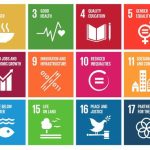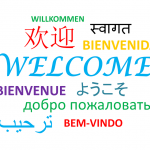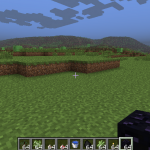RESOURCES YOU SHOULD CHECK OUT
By Rachel Collishaw
Editor’s Note: These resources provide a wonderful starting point for semester 2!
The Historical Thinking Project – The home of historical thinking in Canada. All resources are in French and English. You get background on Historical Thinking for you, posters to print out for your classroom, and templates that you can use right away with your classes. There is a thoughtful blog and a cross-Canada speakers list too.
The Critical Thinking Consortium – Source Docs Collection – only in English, but many, many great visual primary sources all organized around a theme in Canadian history – OCDSB has access, just need to log in.
The Begbie Contest Society – Everything is in English AND French – visual and textual sources in Canadian history from 1850 to the present. Three types of questions you could use – multiple choice, compare and contrast (paragraph), document study (essay). Searchable database all online and all free.
The Virtual Historian – Developed by Stephane Levesque at Ottawa U. Everything is bilingual, covers a wide range of historical events and organized into lessons of 1 day to 1 week. Some are available for free, and some are by subscription.
Great Unsolved Mysteries in Canadian History – AMAZING collections of primary resources. The most recent one on the Franklin Expedition, includes Inuit perspective and artifacts as well as images and video from the recent Parks Canada expedition to the ship. Use the Mystery Quests – they are digestible activities for students at age-appropriate levels. Will not necessarily correspond with Ontario curriculum – developed for across Canada.
Archives of Ontario – Particularly well-curated collections of resources for Ontario schools. Also bilingual. Virtual online exhibitions and downloadables, lesson plans organized by topic or by grade level. Excellent exhibits on many topics in grade 7 and 8 especially.
CBC Digital Archives – Particularly excellent for 20th century Canadian history. Audio and video clips from the news and documentaries, often organized thematically and some with lessons. Annoyingly, every clip plays 2 ads before the clip plays. Sometimes better once you’ve found a good one, to then locate it on youtube, where you can skip the ad.
The Glenbow Archives – If you’re looking for something specific, this archives in Calgary has an enormous amount of material digitized. They have a particularly good collection of indigenous images and of course, an Alberta focus. No lesson plans or pre-made collections. Does not appear to have resources in French.
Where Are The Children? – Oral and visual and textual history of residential schools in Canada. The site was set up by the Legacy of Hope Foundation in 2001. Bilingual
The McCord Museum – Great interactive games, bilingual. HUGE collections of documents. Particularly strong for the 19th century. Thematic online tours of the collections. They don’t particularly have document sets, but if you are looking for a particular source, they’ve got a lot online with a powerful search engine.
Multicultural History Society of Ontario – They have a number of resources, but are particularly interested in partnering with schools. They helped to create Multicultural Canada, an online database which is bilingual and has learning modules on a variety of cultural groups. Some links seem to be broken, but will link you to other sites for primary source research on that group/topic.
Canadian War Museum – The online exhibition: Canada and the First World War is an impressive collection of all kinds of artifacts, documents, maps, and photographs.
Canadian Museum of History – An impressive collection of online exhibits on a myriad of topics in Canadian History from Confederation Dress to Medicare to Rocket Richard. These include webquests and lesson plans. They’re not highly interactive, but there are some choice selected artifacts, especially in topics concerning Indigenous peoples.
National Film Board – Everything you would expect from the NFB and bilingual! If you sign in as a Campus subscriber, you will get education guides. Some of the materials that I use frequently:
- John McCrae’s War: In Flanders’ Fields – a new education guide (written by me) that uses historical thinking concepts explicitly with small group activities. Suggestions for which clips to use to discuss particular concepts and content.
- Minoru: A Memory of Exile – A 20 minute beautifully animated biography of a survivor of the Japanese Internment Camps, told by himself and his son.
- Kanehsatake: 270 Years of Rsistance – behind the scenes of the Oka Crisis from the Mohawk perspective. A long documentary, but clips can be selected.
- Canada Between Two Wars (1962) – a much-loved collection of (pretty random) film footage shot in Canada in the 1920s and 1930s. Students can examine the collection as a primary source from the 1960s to examine historical significance and perspectives.
- Action Stations (1943) This is one example of the primary source films available from the second world war. This one examines the role of corvettes in the battle of the Atlantic.
Library and Archives Canada – Look for the Virtual Exhibitions. This site is a little tricky to navigate, and is not really set up to be educator friendly, but the virtual exhibitions have some value in either finding a particular source, or giving an overview of a topic. Of particular interest is the Lest We Forget project started by award-winning Smiths Falls teacher, Blake Seward. These are all bilingual.
The Virtual Museum – This is a meta-museum database that connects to more than 500 virtual exhibits by large and small Canadian museums and heritage organizations. These online exhibits explore history, culture, science and the arts, and feature fascinating stories and treasures from communities across the country.There are learning resources and lesson plans for teachers sorted by grade, topic and subject, and searchable. These are not necessarily primary source collections, but can still be useful, many are bilingual.
The Memory Project – This is a site by Historica, of the Heritage Minutes, and the Canadian Encyclopedia. You will find personal recollections of Canadians who served in war. Searchable and bilingual.
The National Archives Experience (US) – If you are teaching world or American history, this is an amazing collection of primary sources that are linked and highly interactive. Be careful – you can spend a long time playing around on this site! The primary sources spin and link to each other, can be filtered by type, topic, dates, etc. Students can drag the sources into timelines, posters or create little videos.
Bamboo Shoots – Chinese Canadian Legacies in BC– A website developed for BC schools on the history of Chinese-Canadians in BC. While not so explicitly tied to Ontario curriculum, this is definitely a topic we examine in many of our courses. Of special interest is the Time Shuffle card game which has a carefully curated collection of events with a primary source to illustrate it. These can be printed and put together by you, and played by your students to develop an understanding of continuity and change, though you could do much more with these cards. Lindsay Gibson, who developed the game, is currently working on developing a game for all of Canadian history. Stay tuned!


